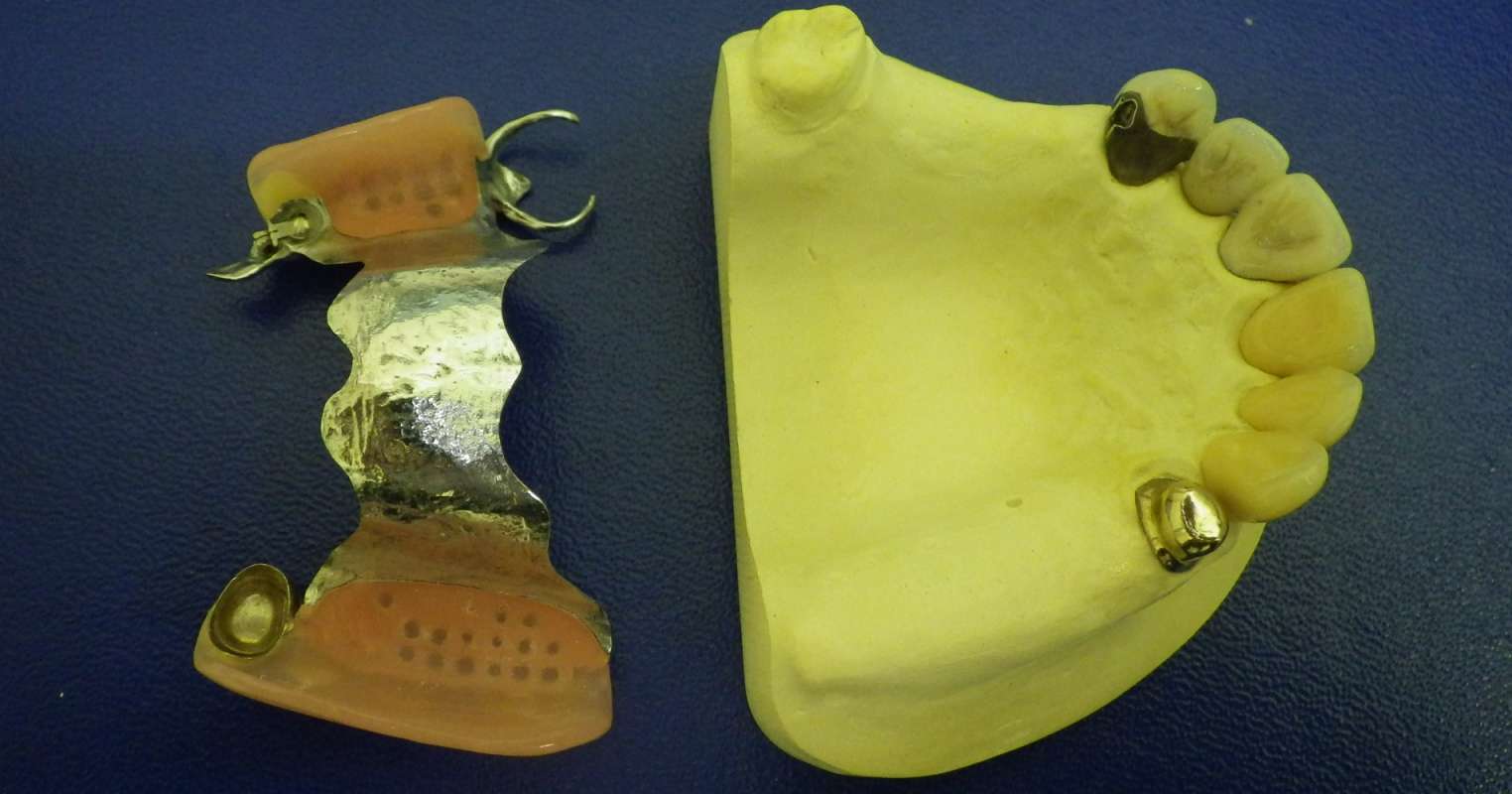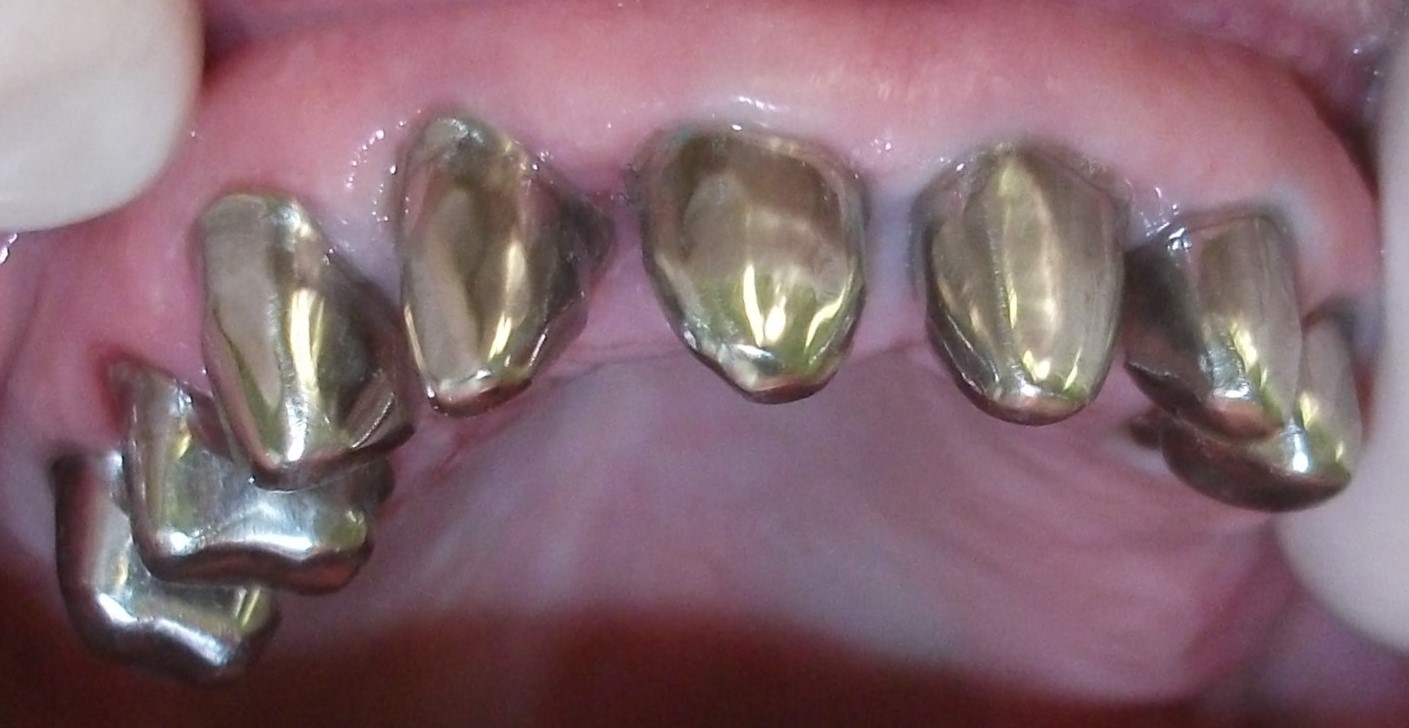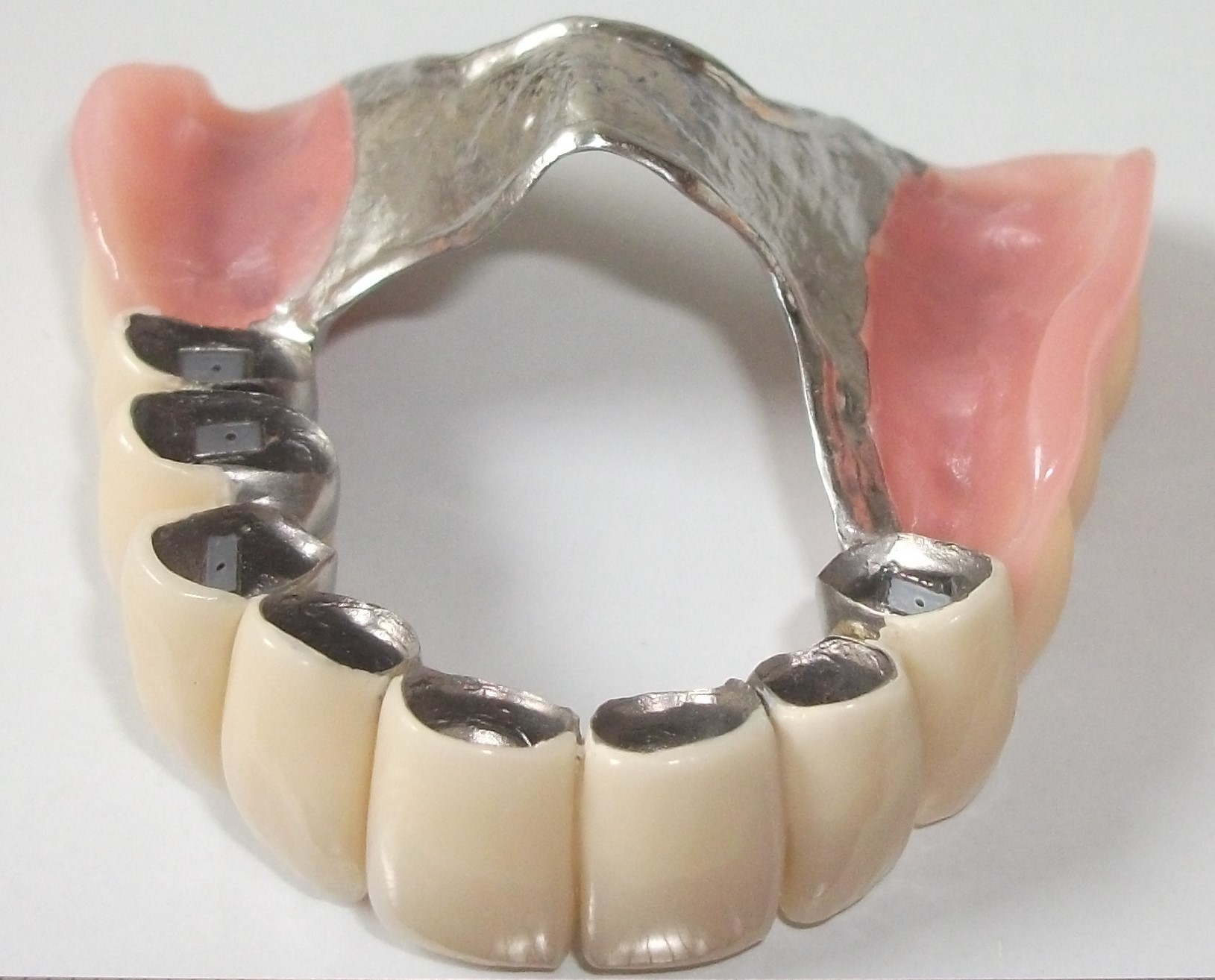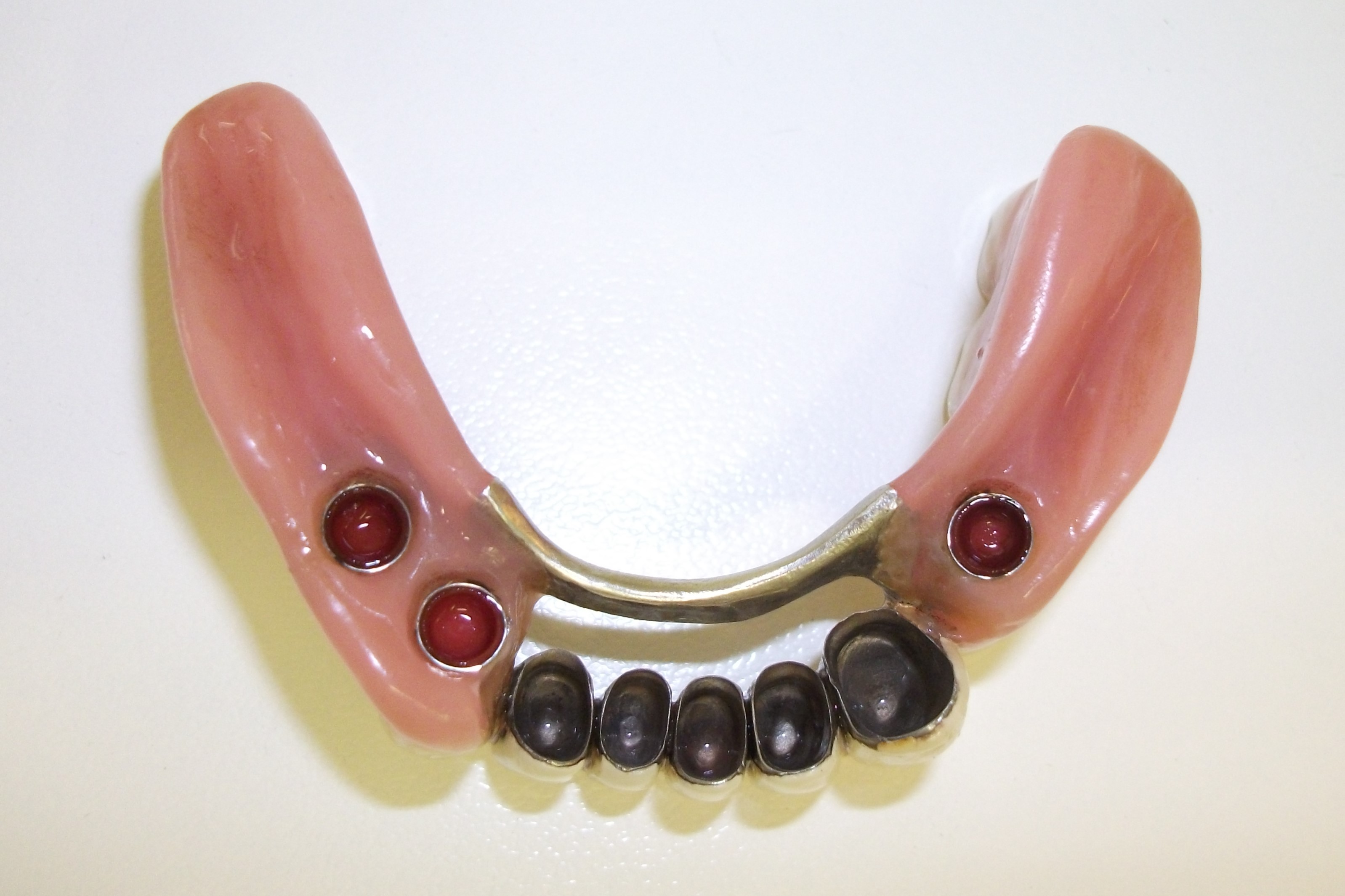Fixed/removable prosthetics
Fixed/removable prosthetics
Fixed/removable prosthetic restorations form a part of prosthodontics. Unlike with full dentures, fixed/removable restorations always involve natural teeth and/or implants. As opposed to purely removable dentures (which include full dentures and partials retained on natural teeth with clasps), fixed/removable dentures consist of two sections, i.e. one fixed and one removable section.
 Fixed/removable denture including CoCr, clasps, precision attachment and double crowns (demo model)
Fixed/removable denture including CoCr, clasps, precision attachment and double crowns (demo model)
 Fixed telescopic crowns (primary)
Fixed telescopic crowns (primary)
The patient-removable section with its retainers and connectors (e.g. clasps, precision attachments, telescopic crowns, press-stud systems, magnets etc.) is anchored on the periodontally-borne, fixed section of the restoration usually consisting of single crowns or bridge abutments supported on natural teeth, implants or implant abutments.
 Removable partial denture (secondary section)
Removable partial denture (secondary section)
 Removable lower partial denture
Removable lower partial denture
A removable bridge (usually "telescopic" and borne on telescopic crowns) replaces teeth with bridge units and almost never requires mucosal coverage.
Other types of fixed/removable prostheses always include sections which are supported by and exert pressure on the mucosa. A coverdenture fully covers all connectors and includes teeth corresponding to those of a full denture. That section of a fixed/removable prosthesis covering the hard upper palate is referred to as the palate and sections on edentulous areas of alveolar ridge are called saddles. In fixed/removable prostheses with multiple saddles they are often connected via a metal base – in the maxilla using a major connector (transverse) and via a lingual bar in the lower. Fixed/removable prostheses may also be totally metal-free. Missing teeth are usually replaced with prefabricated acrylic denture teeth and less frequently with prefabricated porcelain teeth.
When fabricating fixed/removable prostheses, special impression material and techniques are employed in an attempt to ensure that the denture base rests uniformly on the jaw. Exceeding the resilience of the mucosa or repeated "scrubbing" movements of the fixed/removable prosthesis may quickly result in pressure spots. After months or years, the bony denture base undergoes varying degrees of physiological and pressure-induced atrophy. The denture base can be relined to restore congruency.
Unlike purely fixed prosthetic restorations, fixed/removable prostheses can be cleaned and repaired extraorally. In addition, examining the residual dentition and maintaining its hygiene is easier. In case of loss of load-bearing abutments, fixed/removable restorations can often be extended without needing remaking.
Placing implants to increase the number of abutments supporting fixed/removable prostheses results in firmer, more stable retention and relieves the loading on the residual natural dentition.
Fixed/removable prostheses replacing not only missing teeth, but also other anatomical structures are referred to as maxillofacial appliances.
Tooth/implant-borne bridges are normally not considered to be fixed/removable restorations but rather purely fixed prostheses (possibly operator-removable) supported on natural teeth and implants.
PROBIEREN SIE ES EINFACH AUS !!!
Von uns erhalten Sie professionelle Unterstützung.
Treten Sie mit uns in Kontakt oder nutzen Sie unser Kontaktformular.
Wort des Tages
| Deutsch | Englisch |
|---|---|
| Synthesegips | synthetic stone |
Schwerpunkttext des Monats
Vergrößernde Optik in der Zahntechnik Vergrößernde Optik in der Zahntechnik |
